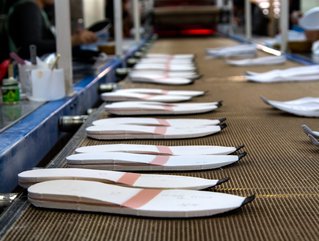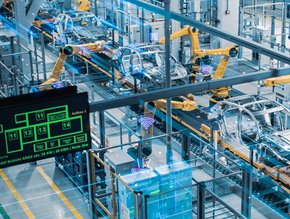AI detects forced labour in manufacturing supply chain

Clothing manufacturing giant Nike has been accused of using Uyghur forced labour in its supply chain by the Canadian Ombudsperson for Responsible Enterprise (CORE).
Responsible manufacturing across the supply chain
In December 2021, the U.S. Congress passed the Uyghur Forced Labour Prevention Act, which stopped the importation of goods from the Xinjiang Uyghur Autonomous Region, in China. The act came into effect in June 2022.
“The objective behind the Act is to prevent continual forced labour in the region and prevent companies from importing goods derived and or made in that region,” said Eric Linxwiler, Managing Director at TradeBeyond.
In Canada, the human rights group Canadian Ombudsperson for Responsible Enterprise, has announced that it is conducting two separate investigations into allegations of Uyghur forced labour in the supply chains and operations of Nike Canada Corp. and Dynasty Gold Corporation. It is believed that both companies are benefiting from Uyghur forced labour. Nike and Dynasty Gold have denied knowledge of such practices in their supply chains.
"[Nike is] committed to ethical and responsible manufacturing and we uphold international labour standards," the company said in a statement.
According to the International Labour Organisation, there are up to 27m people being abused by forced labour across the world. This figure sits just slightly higher than the population of Australia.
While some people have concerns about AI being used to suck up jobs - one company is using AI to help identify forced labour.
AI can help to identify forced labour in the manufacturing supply chain
AI startup Altana Technologies has built an AI tool called Altana Atlas, which is used by shipping and logistics company Maersk as well as pharma giant Merck, to eradicate forced labour from their supply chains.
Evan Smith, the CEO and co-founder of Altana, has likened its AI system to Google Maps for the global supply chain, which can review data far quicker than humans can.
"We’re using AI both to crunch all that messy data – it’s billions of records of really messy shipment data, trade data, corporate registry data and procurement data – and to turn that into one clean, unified picture that can only be done with artificial intelligence," said Smith.
Since the Uyghur Forced Labour Prevention Act was implemented, the shipment of goods from businesses in Xinjiang has decreased by 40%.
"What’s not happening is the Chinese government changing their behaviour with respect to Uyghur-forced labour, so that manufacturing is still happening, and it’s going to try to find its way into the world economy."
While AI can be used to identify forced labour, it is going to take something else to stop the crime altogether.






